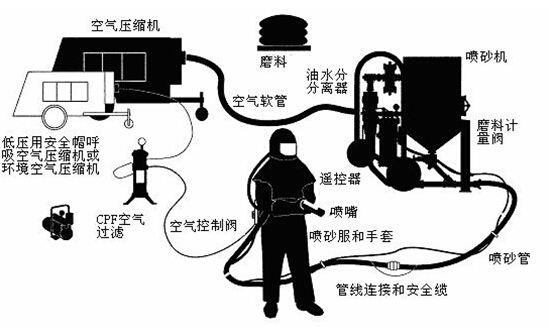What are the common rust removal equipment?
1. Hand Tools
In coating operations, hand tools such as sandpaper, non-woven abrasive discs, wire brushes, air hammers, and chisels are commonly used for surface treatment. The choice of these tools depends on the environment and specific location. Manual tools can remove loose oxides, rust, paint, and other harmful contaminants, but cannot remove firmly adhered oxides, rust, and paint. The advantages of manual tools include strong targeting, low cost, suitability for working in confined spaces, and less dust production, making them suitable for sensitive equipment and work areas.

2. Power Tools
Power tools are similar to manual tools but require electricity or compressed air. Power tools can remove loose oxides, rust, old paint, and other harmful materials, but cannot remove firmly adhered oxides, rust, and old paint. When power tools reach the St3 standard for rust removal, the treated steel surface must be exposed to metal gloss with a certain roughness (at least 25μm). Common power tools include grinders, rotary wire brushes, pencil-shaped wire brushes, sandpaper discs, needle guns, and cone-shaped grinding wheels.
3. Shot Blasting Treatment
Shot blasting treatment uses centrifugal force to project abrasives for surface cleaning. It has been formally applied since the 1930s and is widely used in surface treatment in coating operations. There are two types of shot blasting production lines: one is used only for shot blasting rust removal, while the other combines shot blasting and spray painting in a production line operation.
4. Sandblasting Treatment
Open sandblasting treatment uses compressed air to spray abrasives from the sandblasting machine, generating a huge impact force to remove rust, oxides, and other impurities. The basic components of a sandblasting system include a sandblasting machine, sandblasting pipes and connections, nozzles, oil-water separators and air-drying equipment, air compressors, air pipes, remote control, abrasive metering valves, and abrasives.
5. Conclusion
Choosing the right surface treatment equipment is crucial for improving coating effectiveness. Different equipment is suitable for different environments and needs. Understanding the characteristics and applicable range of various equipment can help us perform surface treatment more effectively, thus improving the quality and durability of the coating.